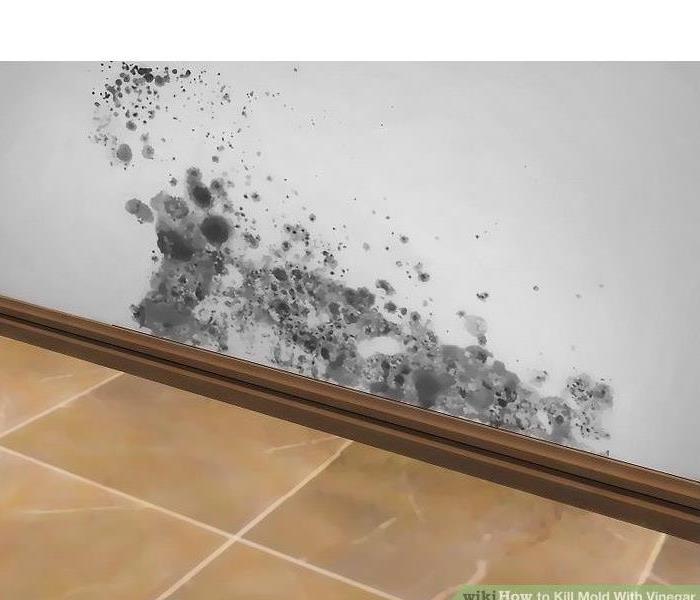Do You Have Mold? What To Do If You Suspect Mold.
3/29/2018 (Permalink)
Just the idea of mold can cause panic for a homeowner. It can create structural issues and seriously affect your property value. But how do you even know if you have mold and how should you proceed if you do?
Did you know that mold is a fungus that’s an integral part of the earth’s bio-mass? It consumes and breaks down organic material, like leaves, wood, and plants. A problem can occur when mold colonizes in our buildings, consumes our building materials, and puts spores into our indoor air. This happens when there’s a moisture problem since mold cannot grow without water. When there’s enough moisture or humidity for colonization, that’s when humans begin to have problems.
The unfortunate reality is that problematic mold can really pop up anywhere that isn’t dry. It is most often seen in attics due to roof leaks, poor air circulation, and bathrooms that ventilate into the attic rather than outdoors; crawl spaces because earthen or gravel flooring allows moisture and spores to rise from the soil; basements that have flooding from foundation leaks or plumbing leaks; and interior living spaces with leaks, bad windows, and high humidity.
The following are criteria that you should be aware of:
- A musty odor is caused during the colonization of some fungal species, but can come and go depending on moisture levels and air current changes.
- If you have water staining or if building materials have discoloration that’s spreading over time… that may be a sign of mold.
- Mold spores that were already present will begin to colonize just 48 hours after a water event.
The remediation process (providing a remedy to a known mold issue) involves three things. Those three things are:
- Killing the fungi,
- Removing the dead mold, and
- Protecting against future mold growth/colonization.
There is a multi-step process that should be followed.
- Contain work area and apply negative air pressure HEPA air purifiers to prevent cross-contamination.
- Mist EPA registered anti-microbial to suspend and kill mold spores.
- Remove affected building surfaces.
- Bag and dispose properly
- Treat cavities/underlayment and dehumidify.
- Abrasively remove dead loose mold.
- Apply EPA registered protective sealer.
- Perform clearance testing.
- Remove containment materials.
It is always a good idea to consult with a mold remediation professional. If there’s an issue you can believe you can tackle yourself, they could give you recommendations about how to do so. Usually it is best to let a professional do the remediation to keep your family/employees safe while preventing cross contamination, killing mold, removing it and preventing new mold from growing.
At SERVPRO of Greeley/Windsor our technicians are certified professionals in Mold Remediation



 24/7 Emergency Service
24/7 Emergency Service
